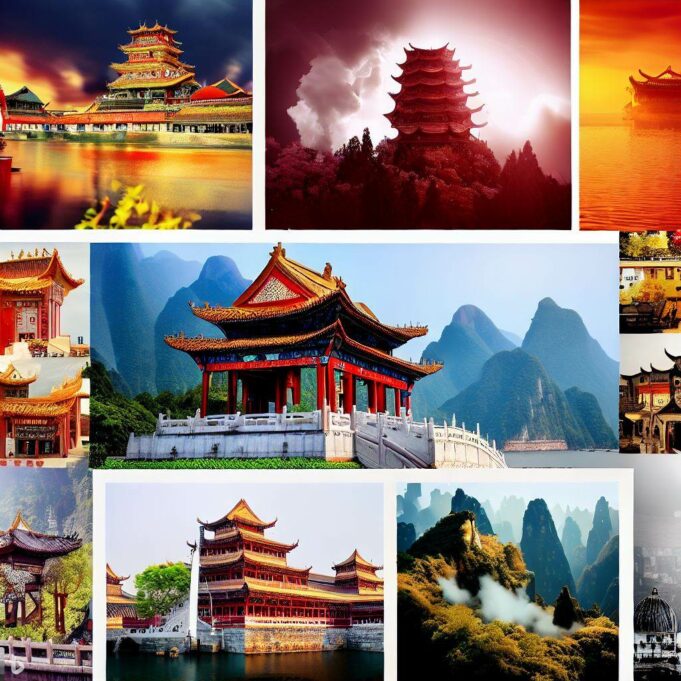China is a vast and ancient country with a rich and colorful history. It has been the birthplace of many great civilizations, inventions, and cultural achievements. China is also home to some of the most stunning and diverse natural landscapes, as well as some of the most modern and dynamic cities in the world. In this article, we will explore some of the top attractions that China has to offer, from the majestic Great Wall to the mysterious Terracotta Army, from the serene West Lake to the bustling Shanghai, and from the sacred Mount Tai to the exotic Tibet.
The Great Wall of China is one of the most iconic and impressive structures ever built by humans. It stretches for over 21,000 kilometers across northern China, from the Gobi Desert to the Yellow Sea. The wall was constructed over several dynasties, starting from the 7th century BC, to protect China from invaders and unify its territories. The wall is not a continuous line, but rather a complex network of fortifications, watchtowers, and passes. The wall is also a symbol of China’s cultural heritage and national pride, and has been designated as a UNESCO World Heritage Site. The most popular sections of the wall for tourists are near Beijing, such as Badaling, Mutianyu, and Jinshanling.
The Terracotta Army is another marvel of ancient Chinese engineering and artistry. It is a collection of over 8,000 life-sized clay soldiers, horses, chariots, and weapons that were buried with the first emperor of China, Qin Shi Huang, in his mausoleum near Xi’an. The army was meant to guard the emperor in his afterlife and demonstrate his power and glory. The army was discovered by farmers in 1974, and has since become one of the most visited archaeological sites in the world. The figures are remarkably realistic and individualized, with different facial expressions, hairstyles, clothing, and poses. The army is also a testament to the technological and military achievements of the Qin dynasty, which unified China for the first time in history.
West Lake is a scenic lake in Hangzhou, the capital of Zhejiang province. It is surrounded by hills, gardens, temples, pagodas, bridges, and islands, creating a picturesque landscape that has inspired many poets and painters throughout Chinese history. West Lake is also a place of cultural and historical significance, as it was the site of many important events and legends in Chinese history. For example, it was here that the famous poet Su Shi wrote his ode to the lake, “Ode to the West Lake”, in the 11th century. It was also here that the legendary lovers Xu Xian and Bai Suzhen met and fell in love in the classic folk tale “The Legend of the White Snake”. West Lake is a UNESCO World Heritage Site and a national symbol of China’s natural beauty and artistic heritage.
Shanghai is China’s largest and most cosmopolitan city, located at the mouth of the Yangtze River. It is a global financial, commercial, and cultural center, with a skyline that rivals any other city in the world. Shanghai is also a city of contrasts, where traditional and modern elements coexist and blend together. On one hand, you can find historical landmarks such as the Bund, a waterfront promenade lined with colonial-era buildings; Yu Garden, a classical garden dating back to the Ming dynasty; and Nanjing Road, a bustling shopping street that has been in operation since the 19th century. On the other hand, you can also find futuristic attractions such as the Oriental Pearl Tower, a 468-meter-high TV tower that offers panoramic views of the city; Shanghai Tower







